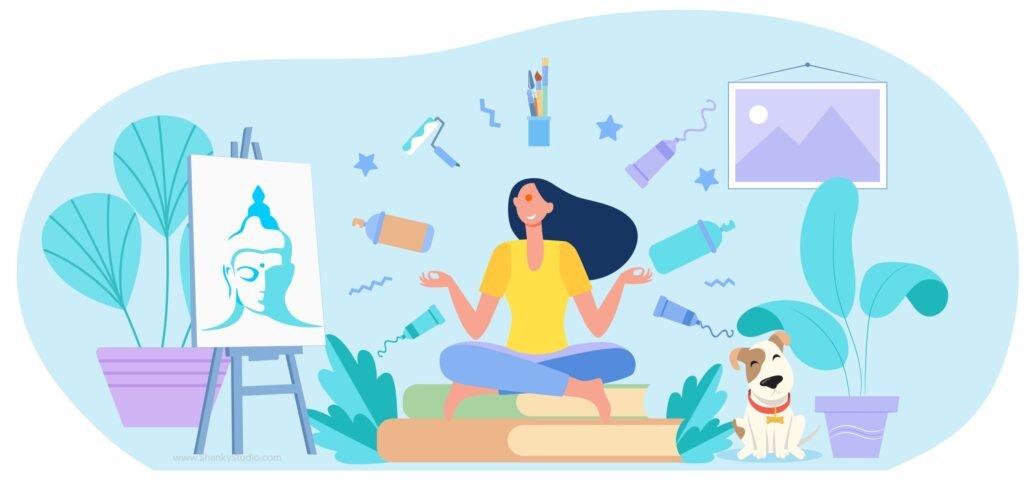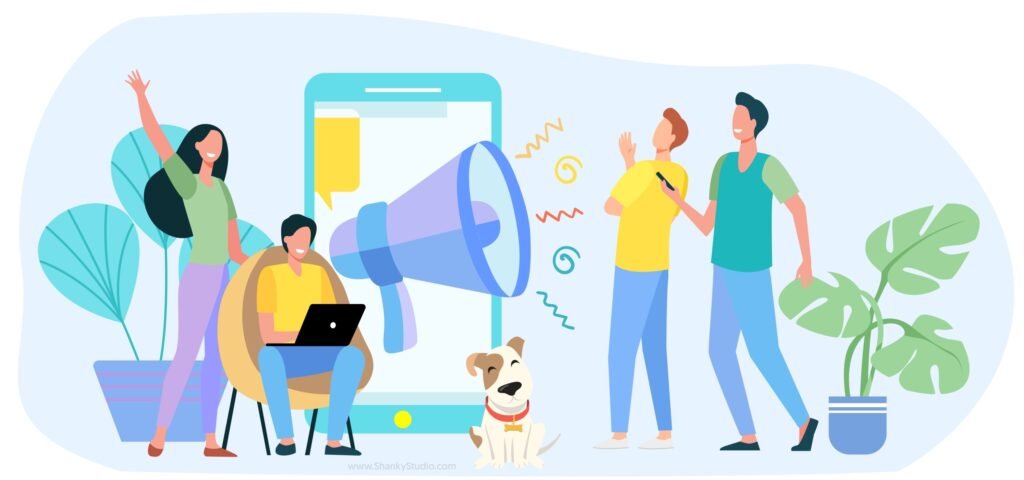Art is more of a happening (not a doing), a natural meditation, where subject and object merge into each other, and one transcends the concept of time, space and unit/self. It is amazing that this phenomenon takes place when the entity “I” is not present at all. Anyway, though we enjoy this creative happening, the manifestation may be enjoyed by others. It is an interesting paradox that art enables us to find ourselves and lose ourselves at the same time.
An act of observation in visual art, involves the observer, the observed and the observation. When the observer is acutely absorbed in an object, then all three fuse into one, and pure awareness about the object remains. During this process of acute observation, conscious mind (observer) goes into a state of inertia; and control is passed on to subconscious mind, which is source of all creativity. This is technically known as Samadhi (Absorption) on an object.
As per ancient Indian scriptures, the pineal gland is a grosser form of Agya Chakra, i.e. Third Eye, and is responsible for concentration and creativity. Till the age 14 or so, pineal gland is active and fully functional. As the age advances, the pineal gland gets calcified and passes on control to the pituitary gland, which is responsible for the puberty in the children. That is why most of the children are born artists, but they start losing their natural artistic ability as the age advances. There are many techniques, which can re-activate the Third Eye, and performing Visual Art is one of most effective technique.
Hugh MacLeod said, “Everyone is born creative; everyone is give a box of crayons in kindergarten. Then when you hit puberty, they take the crayons away and replaces them with dry, uninspiring books on algebra, history, etc. Being suddenly hit years later with the Creative Bug is just a wee voice telling you, I’d like my crayons back, please.”
Technical Definition of Shmadhi
Great Sage Patanjali, describe the word Samadhi in his scripture Yoga Sutra (chapter Vibhuti Pada, Sutra # from 1 to 4). When mind is fixed on a place is known as concentration (Dharana). After practice, when the concentration becomes uninterrupted, it is known as Meditation (Dhyana). In meditation, when only essence of the object or place remains, and also when the Self appears to be absent, that state is known as absorption (Samadhi) on an object or a place. Collective practice of concentration (Dharana), meditation (Dhyana) and absorption (Samadhi) is known as Samyama, which is technical name given to the above process.
Can I draw?
Some people do have innate abilities, and thus can naturally perform better than others in a particular subject. They have revered interest in the subject, and progressively improve their skills with uninterrupted practice. But talent can be also be acquired, learnt and developed by those consider untalented. They can also achieve similar result with intense practice. You can read more about Neuro-plasticity from the Internet. The fact is that people are often more creative than they think. It is said if you can write, you can draw as well. Everyone can learn to draw and paint, and they do it extremely well. In visual art, no previous experience is required. The only prerequisite is that you should have keen interest in drawing and painting, with sufficient time to practice it.
Benefits of Visual Art
- Research estimates that eighty to eighty-five percent of our perception, learning, cognition, and activities are mediated through vision. Drawing is a process that improves the precise orchestration of multiple brain mechanisms such as perceptual processing, memory, precise motor planning and motor control, spatial transformations, emotions, and other diverse higher cognitive functions.
- Scientists have observer that visual art helps to attain good traits such as appreciation, cognitive abilities, concentration, creative expression, critical thinking, decision making, dedication, fine motor abilities, goal, setting and achieving, imagination, intelligent actions, organizing capabilities, out of box thinking, patience, perfection, perseverance, quality, right brain stimulation, self-confidence, sensitivity and therapeutic.
- Visual Art is an activity, which synchronizes right and left brain in tandem. Right brain is feminine, unites, emotional, fluid, spontaneous, experimental, synthesizes, intuitive, subjective, whole, image, risk, random, doer, feeling, imaginative, believes, fantasy, Ida Nadi and controls left body. Whereas left brain is masculine, divides, rational, planned, structured, theoretical, analyses, logic, objective, details, language, safety, logical, thinker, facts, propositional, knowing, reality, Pingla Nadi and controls right body.
- Creating and viewing art triggers a surge in feel-good chemicals i.e. Dopamine, Serotonin, Oxytocin and Endorphins.
Let Meditation Happen
Margaret Atwood has rightly said, “In the end, we’ll all become stories”. So grab few art supplies and start playing around with different mediums such as pen, graphite pencil, charcoal, watercolor, acrylic, oil, pastels, mix-media and digital drawing. Explore and create various type of art such as portrait, landscape, floral, mandala, drawing from still life and abstract art etc.
Remember, in art, you are not competing with anyone – you are just exploring your latent creative ability. You can learn to draw by drawing, which can be achieved by experimenting with art material. At the most, you need a company of an artist to unlock your creativity. Spare some time and have a date with your inner-being and explore dimensionless-dimension, which is beyond time and space – a real and natural meditation!
Final artwork created by you will be perfect wall decor for your home or office. Having beautiful and perky artworks in your home or office space, enriches your daily experience and also reflect your artistic bent of mind.
Visual Art Courses for Adults & Kids
Best quality in best prices
Visual Art Fundamental Course| Acrylic Painting Course | Watercolor Painting Course| Oil Color Painting Course | Colored Pencil Painting Course | Soft Pastel Paintings Course | Portrait Course| Landscape Course | Abstract Art Course | Clay Sculpturing Course | Digital Design Course | Human Anatomy Course| Fashion Illustration Course |


